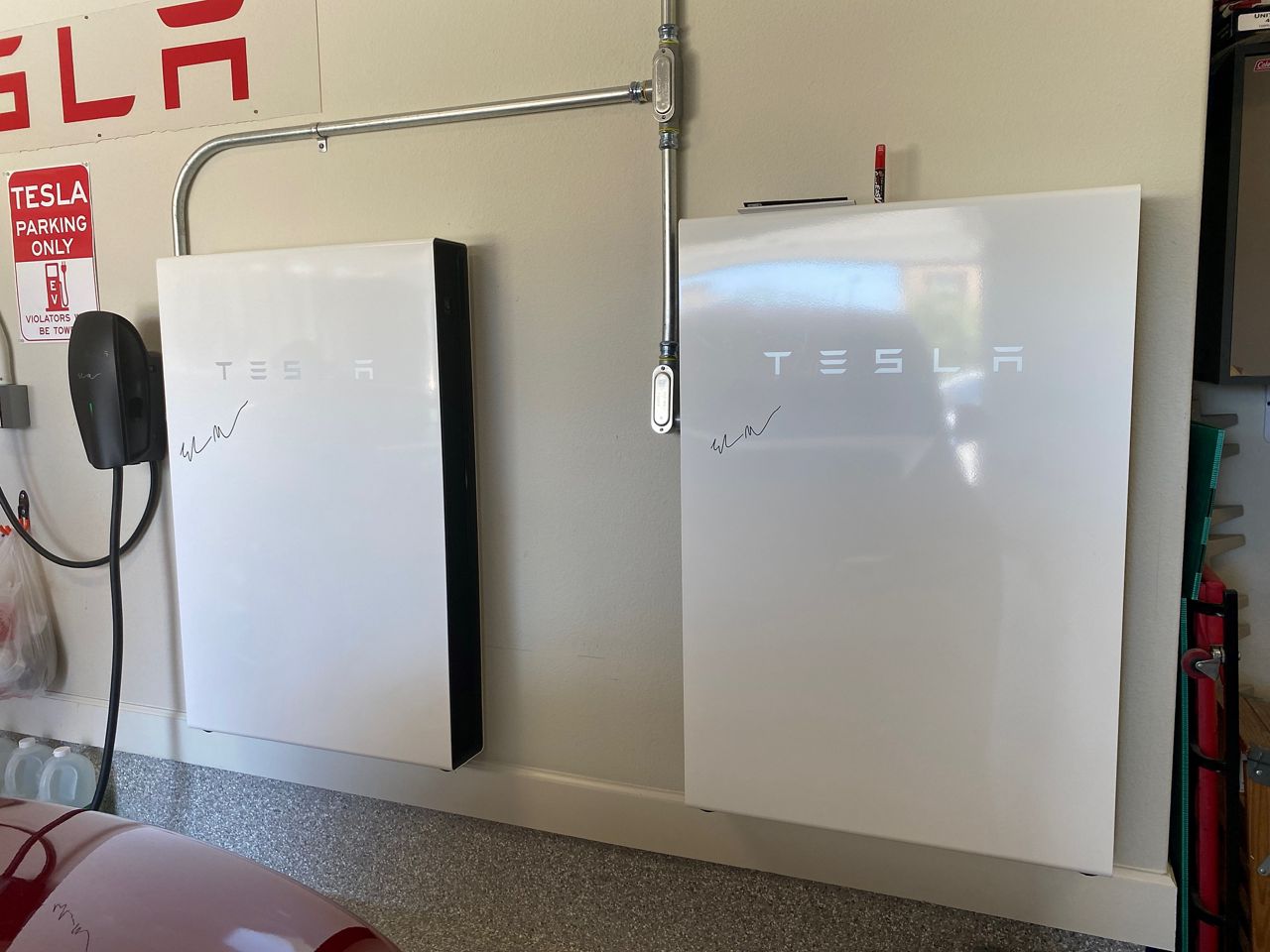TEXAS — It’s hard to believe it’s been almost two and a half years since the deadly winter storm that passed through Texas. Since then, the Electric Reliability Council of Texas (ERCOT) has been under scrutiny from households across the state.
Tesla thinks it could have the answer by using batteries to help power the grid during extreme weather events, but it’s not allowed in Texas.
ERCOT doesn't allow batteries to send power to the grid unless it has extra energy not used by the owner.
According to Tesla's website, the Tesla powerwall is "an integrated battery system that stores your solar energy for backup protection, so when the grid goes down your power stays on."
“The way it works is when I send power back to the grid, because every bit of power you create has to go someplace,” said Mike Danberry, a powerwall owner in Dripping Springs. “Once every bit of power in your house is being used, everything else is being sent to the grid.
Tesla is asking ERCOT for a rule change, and wants its powerwall customers in Texas to take action.

“I'd love to be part of it knowing that I'm helping. Just like when we had the power outages in that February snowstorm. There were times when my powerwalls were full, the sun was still shining, and I was sending power back to the grid. My neighbors here are actually using power that I send back to the grid. That is green energy that’s being produced right here at my house,” said Danberry.
Tesla is asking powerwall owners to show ERCOT that a virtual power plant, also known as a "powerwall fleet," could help in extreme cases, like during a winter storm or with extra demand during the Texas summer heat.
“We won't run into situations here in Texas, where it's really, really hot what we're experiencing right now, and have limited capacity or power plants not able to meet that. We can essentially let batteries come online and take the work of that,” said Emily Beagle, a research associate with the Webber Energy group at UT Austin.
Powerwalls could be the answer as the grid reaches record demand this summer.
“California is a great example where they just had a recent event where they were able to kind of dispatch one of these virtual power plants during a time of strain and significant demand on the grid and see the impacts of that in the way that they were able to provide that power and provide for grid reliance and stability out in California,” said Beagle.
We reached out to ERCOT for comment but were told it does not comment on specific companies.
Owners across the state say they’re opting in to help show there’s a solution to increase grid stability. Danberry hasn’t received a notification yet asking him to do so.
According to Tesla’s website, it won’t leave powerwall owners with less than 20% power to use for their homes, but since he uses almost all of his, it makes him reconsider.
“That doesn't leave me much power to do what I want to do with it, which is basically charge the cars and still run the AC,” said Danberry.
He charges his Tesla and entire home using four Tesla powerwall batteries and a solar roof.
When extreme weather conditions hit the Lone Star State, Danberry wants to make sure he still has power for his home and to get around.



